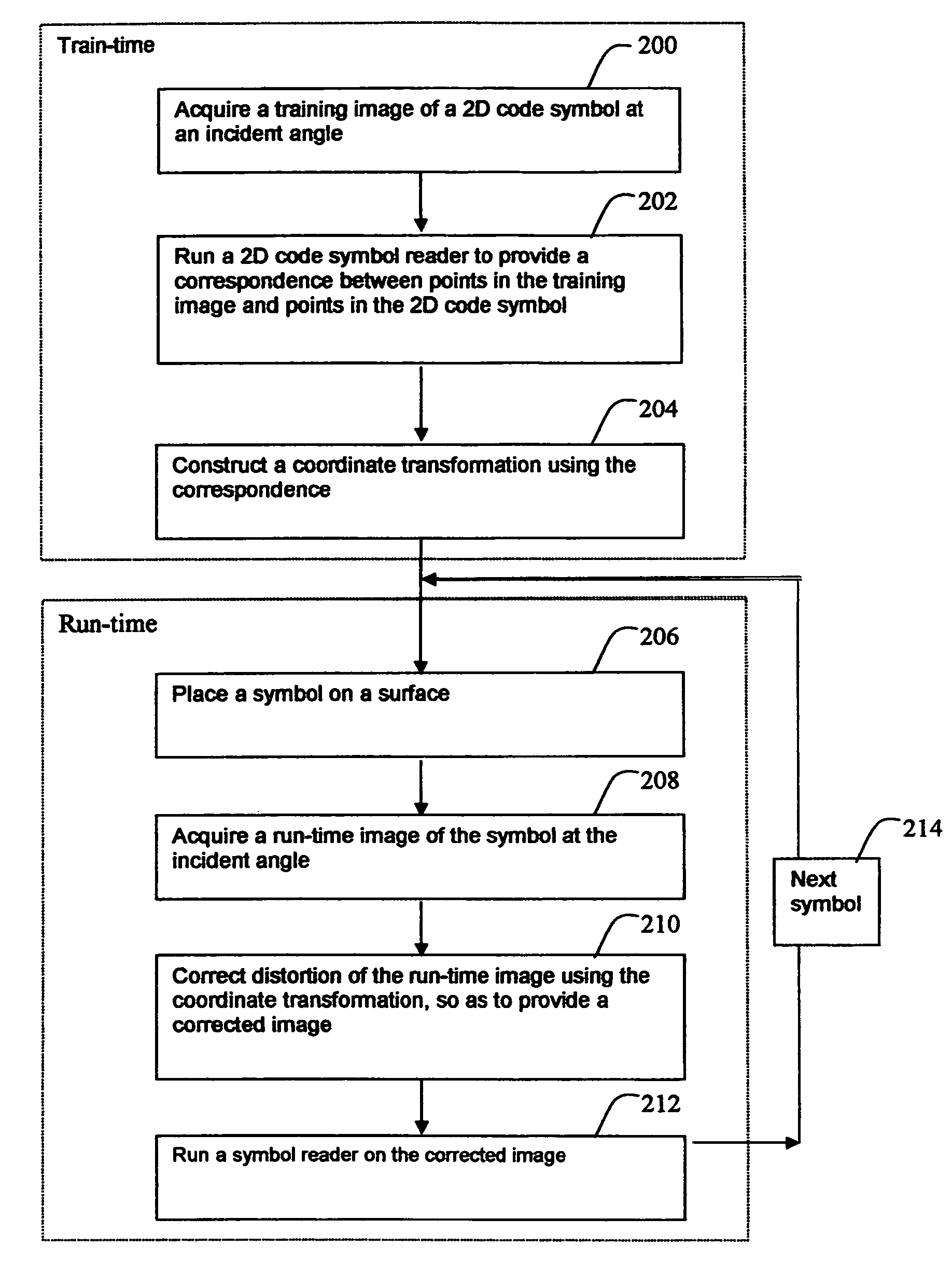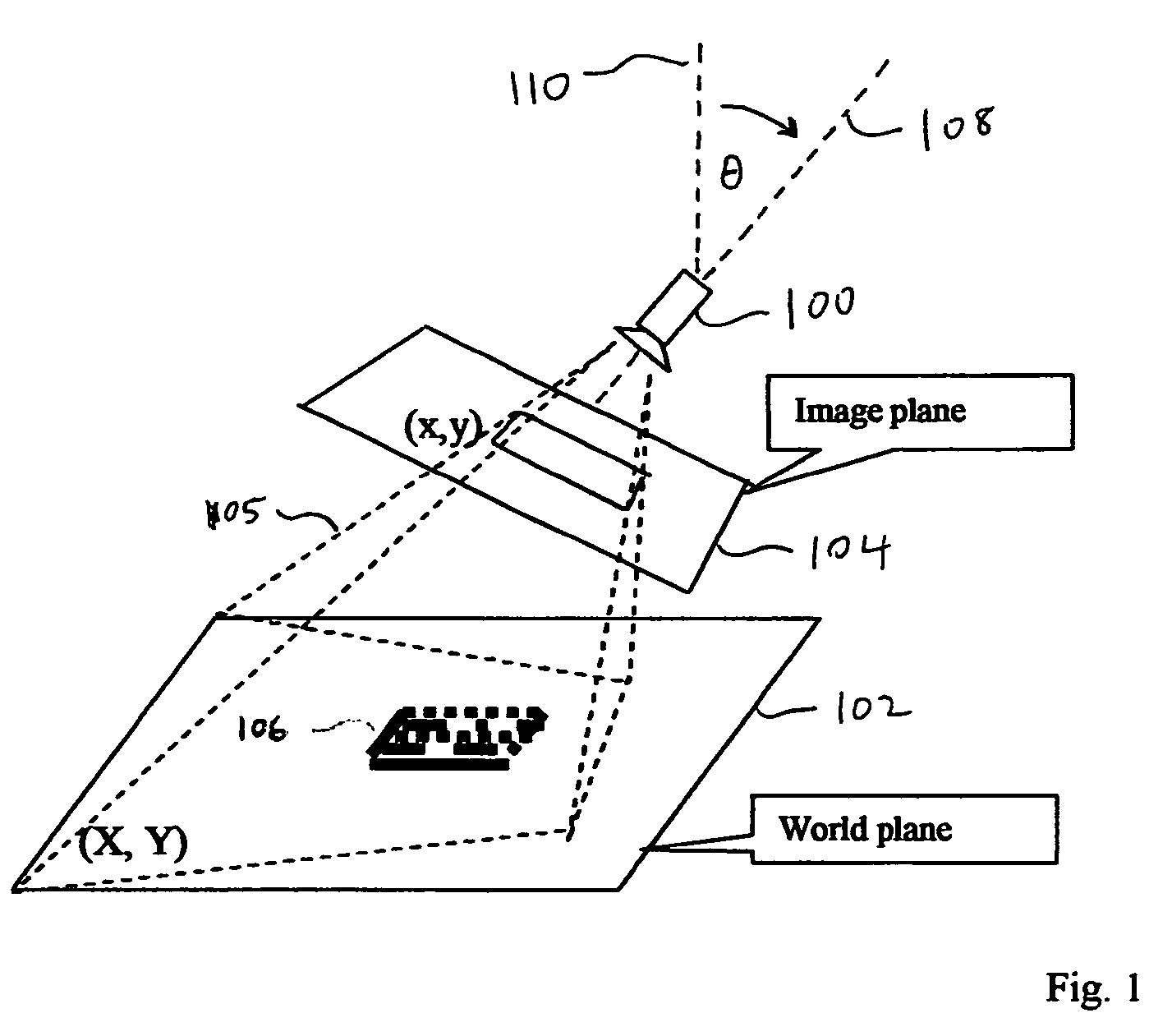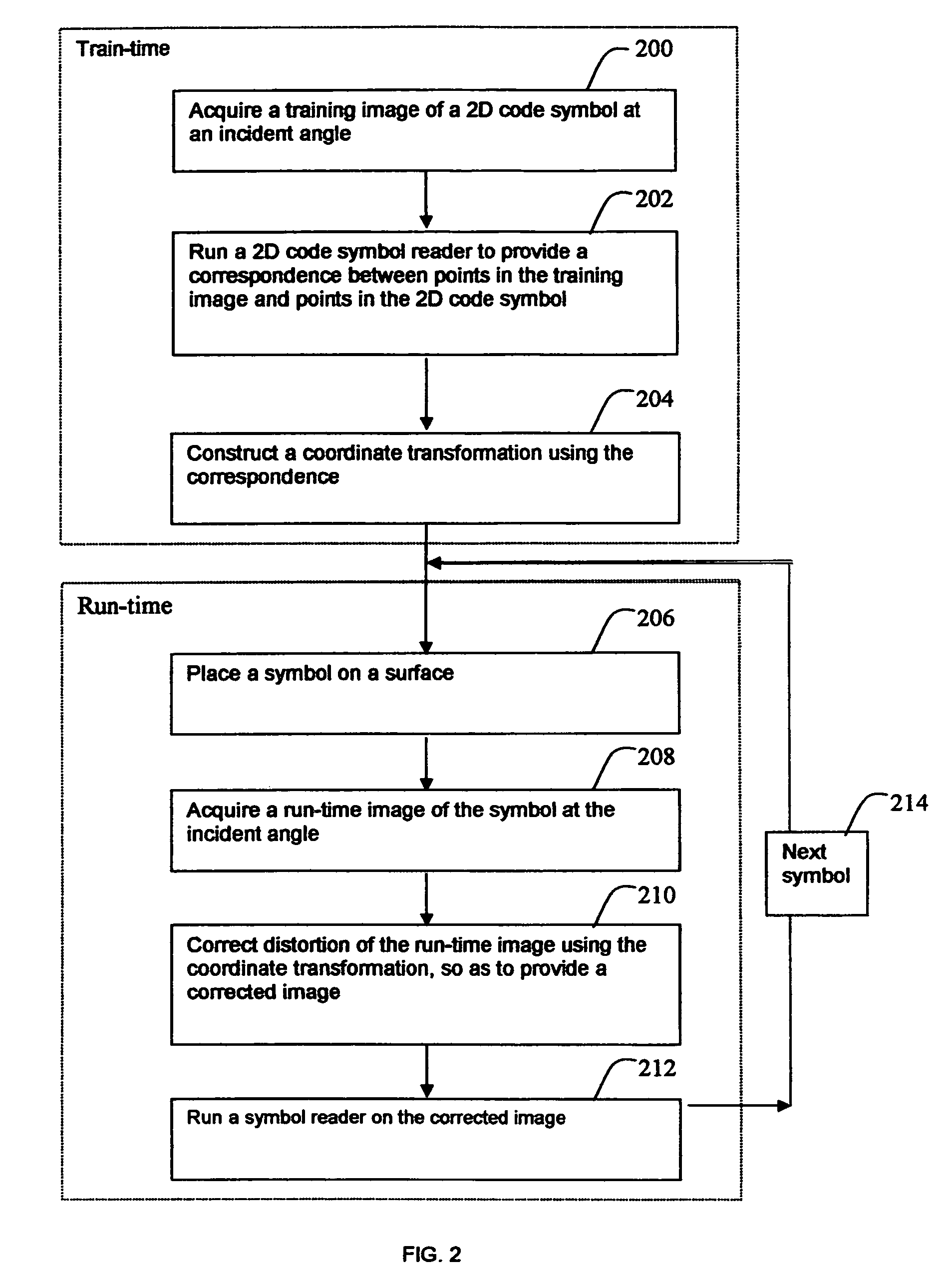Decoding distorted symbols
a technology of distorted symbols and decoding, applied in the field of reading symbols, can solve the problems of inability to meet conditions, difficulty in automatic identification, and inability to achieve the effect of avoiding excessive computational complexity and avoiding compromised burst noise handling
- Summary
- Abstract
- Description
- Claims
- Application Information
AI Technical Summary
Benefits of technology
Problems solved by technology
Method used
Image
Examples
Embodiment Construction
[0050]Referring to FIG. 1, a preferred embodiment of the invention provides methods for calibrating a projective camera model of a camera 100, for which a perspective transformation 105 exists, between a world plane 102 and an image plane 104. The world plane 102 bears a code symbol 106.
[0051]In general, the method of the invention can be used with other camera models, such as a simplified model with variable zoom, or a more complicated model including a lens with barrel or pin-cushion distortion, and with transformations other than geometric transformations and perspective transformations, such as a polynomial transformation, as long as a correspondence can be established using multiple feature points, as will be explained further below.
[0052]The method of the invention is applicable to mounted cameras for reading symbols, as well as to “portable” symbol readers, provided that the incident angle θ between an optical axis 108 of the camera (or the symbol reader) and a normal vector ...
PUM
 Login to View More
Login to View More Abstract
Description
Claims
Application Information
 Login to View More
Login to View More - R&D
- Intellectual Property
- Life Sciences
- Materials
- Tech Scout
- Unparalleled Data Quality
- Higher Quality Content
- 60% Fewer Hallucinations
Browse by: Latest US Patents, China's latest patents, Technical Efficacy Thesaurus, Application Domain, Technology Topic, Popular Technical Reports.
© 2025 PatSnap. All rights reserved.Legal|Privacy policy|Modern Slavery Act Transparency Statement|Sitemap|About US| Contact US: help@patsnap.com



